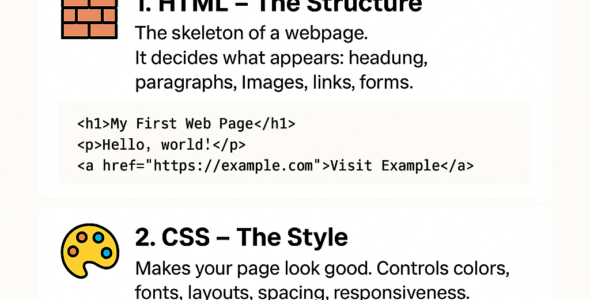n this module, we'll explore the advanced best practices for writing efficient, maintainable, and scalable CSS code, including CSS architecture, naming conventions, commenting, and testing. You'll learn about the syntax, examples, and best practices for writing advanced CSS code that follows industry standards.
Advanced CSS Best Practices
- CSS Architecture: Organize CSS code into a modular and scalable architecture.
Syntax: /* separate files for layout, components, and utilities */
Example: layout.css, components.css, utilities.css
- Naming Conventions: Use consistent and descriptive naming conventions.
Syntax: /* use BEM or SMACSS naming conventions */
Example: .header__title or .header-title
- Commenting: Write clear and concise comments to explain CSS code.
Syntax: /* comments */
Example: /* header styles */
- Testing: Test CSS code for compatibility, performance, and accessibility.
Syntax: /* use testing tools like CSS Linter or Stylelint */
Example: /* test for CSS errors */
- CSS Reset: Use a CSS reset to normalize browser styles.
Syntax: /* use a CSS reset like Normalize.css */
Example: /* normalize browser styles */
- Preprocessors: Use CSS preprocessors like Sass or Less to write more efficient CSS code.
Syntax: /* use Sass or Less syntax */
Example: /* write Sass code */
- CSS Frameworks: Use CSS frameworks like Bootstrap or Tailwind CSS to speed up development.
Syntax: /* use Bootstrap or Tailwind CSS classes */
Example: /* use Bootstrap grid system */
Examples
- Organize CSS code into a modular architecture:
/* layout.css */
.header {
/* styles */
}
/* components.css */
.button {
/* styles */
}
/* utilities.css */
.text-center {
/* styles */
}
- Use consistent naming conventions:
/* BEM naming convention */
.header__title {
/* styles */
}
/* SMACSS naming convention */
.header-title {
/* styles */
}
- Write clear and concise comments:
/* header styles */
.header {
/* styles */
}
Best Practices
- Use advanced CSS best practices to write efficient, maintainable, and scalable CSS code.
- Organize CSS code into a modular and scalable architecture.
- Use consistent and descriptive naming conventions.
- Write clear and concise comments to explain CSS code.
- Test CSS code for compatibility, performance, and accessibility.
- Use a CSS reset to normalize browser styles.
- Use CSS preprocessors like Sass or Less to write more efficient CSS code.
- Use CSS frameworks like Bootstrap or Tailwind CSS to speed up development.
- Test your advanced CSS code in different browsers and devices to ensure compatibility.
By mastering advanced CSS best practices, you'll be able to write efficient, maintainable, and scalable CSS code that follows industry standards.

